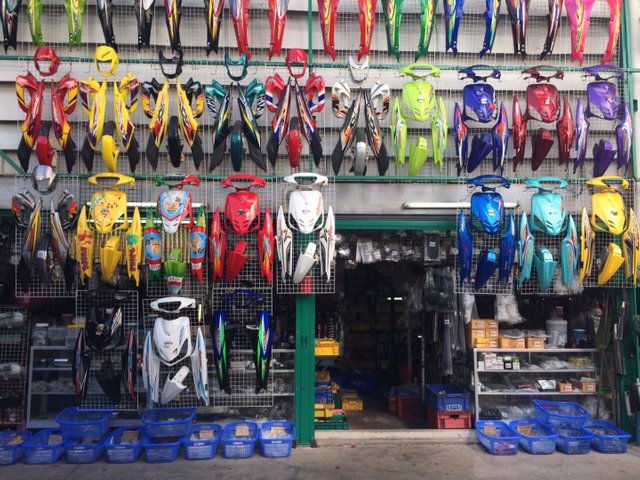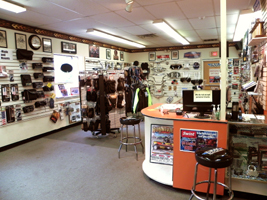Discover High Quality Moto Parts NZ for All Your Motorcycle Needs
Discover High Quality Moto Parts NZ for All Your Motorcycle Needs
Blog Article
Understanding the Important Parts of a Motorbike: A Comprehensive Guide for Enthusiasts
For bike lovers looking to raise their riding experience and ensure their bikes run efficiently, comprehending the vital parts of a motorbike is critical. Each aspect, from the engine's intricate operations to the important function of the braking mechanisms, not just affects efficiency but also security and convenience. This guide will go through the fundamental components that every cyclist should be acquainted with, enabling educated options in both upkeep and prospective upgrades. As we begin this exploration, one must ask: just how does each component connect to develop the seamless experience every fanatic looks for?
Engine Components

The camshaft plays an essential function in managing the timing of the engine's valves, making certain the accurate opening and closing needed for reliable gas and air consumption, as well as exhaust expulsion. This timing is crucial to preserving ideal engine performance and effectiveness. In addition, the carburetor or fuel injection system, depending upon the bike model, is responsible for blending air with gas in the right ratio for combustion.
The cooling system, either air or liquid-based, works to maintain the engine's temperature within operational limits, protecting against getting too hot and guaranteeing long life - motorbike shop. Each element, carefully developed and integrated, adds to the seamless procedure of the engine, specifying the motorbike's power result and overall performance
Transmission System
Indispensable to the motorcycle's capability, the transmission system makes sure efficient power transfer from the engine to the wheels. This system comprises a number of important components, including the clutch, transmission, and final drive, each playing a vital role in equating the engine's power right into motion. The clutch, normally operated by a hand lever, offers to engage and disengage the engine from the transmission, enabling smooth gear modifications and controlled acceleration.
The transmission, commonly described as the transmission appropriate, contains a collection of equipments that motorcyclists can manually shift with to readjust the bike's rate and torque output. These equipments are arranged in a sequence that allows the motorcycle to speed up efficiently and preserve ideal engine performance across different rates. Most bikes use a consecutive gearbox, calling for the biker to move gears in a predetermined order.
Braking Systems
While comprehending the transmission system is vital to taking advantage of a motorbike's power, equally vital is the capacity to regulate and stop that power effectively, which is where braking systems come into play. Brakes are vital for safety and security and efficiency, offering the rider with the required control to browse various terrains and problems. Generally, motorbikes feature 2 kinds of stopping systems: disc brakes and drum brakes.
Disc brakes are a lot more widespread in modern bikes due to their remarkable performance. They are composed of a brake disc, caliper, and pads. When activated, the caliper presses the brake pads versus the rotating disc, transforming kinetic power into warm, consequently reducing the wheel. This system supplies much better heat dissipation, constant efficiency, and boosted stopping power, particularly in damp problems.
Conversely, drum brakes, though much less usual, are still discovered in some motorbikes. They work by pushing brake footwear versus the internal surface of a drum connected to the wheel. While usually less reliable in warm dissipation and quiting power, drum brakes are less complex and extra cost-efficient.
Recognizing these stopping systems' subtleties permits bikers to maintain their websites motorbikes appropriately and value the design that guarantees effective and risk-free quiting.
Suspension and Steering
Suspension and steering systems are important components that dramatically influence a motorbike's handling and trip comfort. The suspension system, including forks at the front and shock absorbers at the rear, takes in road irregularities, enhancing security and control. Front forks, generally telescopic or inverted, compress and rebound to alleviate effects, while rear shock absorbers maintain tire call with the road, essential for traction and safety and security.
Guiding, focused around the handlebars, links the rider to the motorbike's directional control. The steering head bearings make sure smooth procedure, allowing specific maneuverability. Proper placement and maintenance of these bearings are important for foreseeable steering response and minimizing biker exhaustion.
The suspension's adjustability is one more important aspect; preload, damping, and rebound setups enable modification great post to read to fit numerous riding problems and styles. This flexibility is necessary for optimizing performance, whether navigating metropolitan streets or tackling sturdy routes. Developments like digital suspension systems offer real-time modifications, boosting adventure top quality across diverse terrains.

Electric Solutions
After making certain a smooth and controlled ride with effective suspension and guiding systems, attention transforms to the electric systems, a critical aspect of modern-day motorcycles. These systems play a vital duty not just in beginning the engine however also in powering different parts that improve the capability and safety of the motorbike.
At the heart of a motorcycle's electric system is the battery, which shops electric power required for starting the engine and powering supporting systems - mx parts nz. The generator or generator, paired with the rectifier-regulator, makes certain the battery continues to be charged while the motorbike functions, transforming mechanical energy right into electric power and maintaining voltage degrees
The ignition system, another critical component, is accountable for firing up the air-fuel blend in the engine's cyndrical tubes. Modern motorcycles often use a digital ignition system, find this using greater effectiveness and dependability compared to conventional systems.
Lights systems, including headlights, tail lights, and signs, are likewise important, ensuring presence and safety and security for the motorcyclist. Additional digital parts such as sensors, control systems, and shows contribute to innovative attributes like fuel injection monitoring, anti-lock stopping systems (ABDOMINAL), and digital control panels, additionally improving the riding experience.
Conclusion
A thorough understanding of a motorbike's important components, consisting of the engine, transmission system, stopping mechanisms, suspension, steering, and electric systems, is crucial for fanatics intending to optimize efficiency, comfort, and safety. Mastery of these components enables notified choices relating to maintenance and upgrades, ultimately enhancing the riding experience. By integrating this expertise, cyclists can ensure their motorbikes operate at peak efficiency and dependability, consequently taking full advantage of both enjoyment and durability of their vehicles.
For motorbike enthusiasts looking to boost their riding experience and ensure their bikes run efficiently, understanding the necessary components of a motorcycle is extremely important.Integral to the bike's performance, the transmission system ensures effective power transfer from the engine to the wheels.While understanding the transmission system is key to taking advantage of a motorbike's power, equally important is the capability to control and quit that power successfully, which is where braking devices come into play. Normally, motorbikes feature 2 types of stopping systems: disc brakes and drum brakes.
A thorough comprehension of a bike's important components, including the engine, transmission system, braking devices, suspension, guiding, and electrical systems, is essential for lovers intending to enhance comfort, performance, and safety.
Report this page